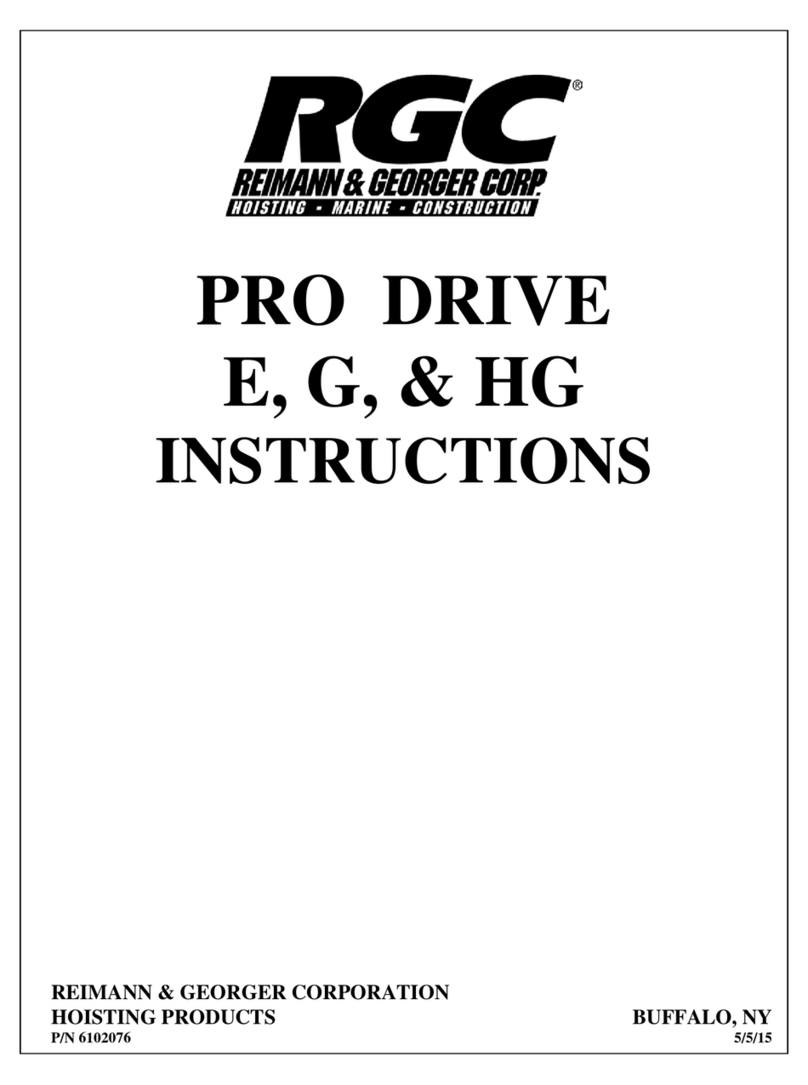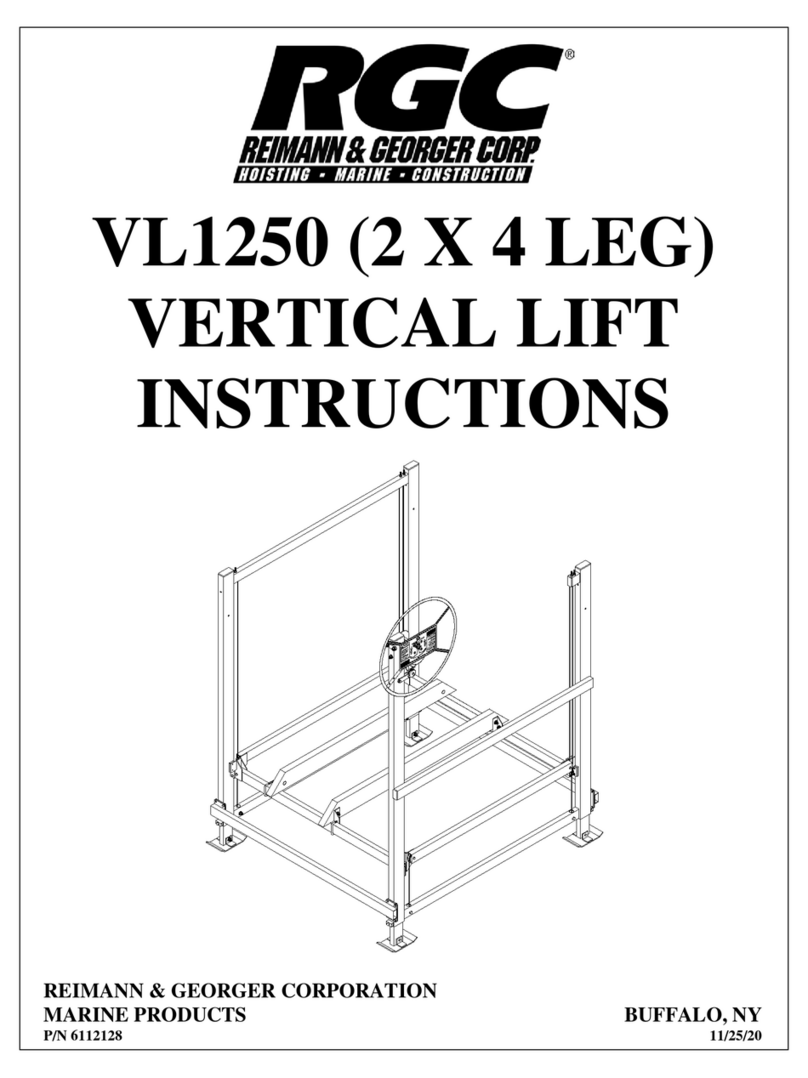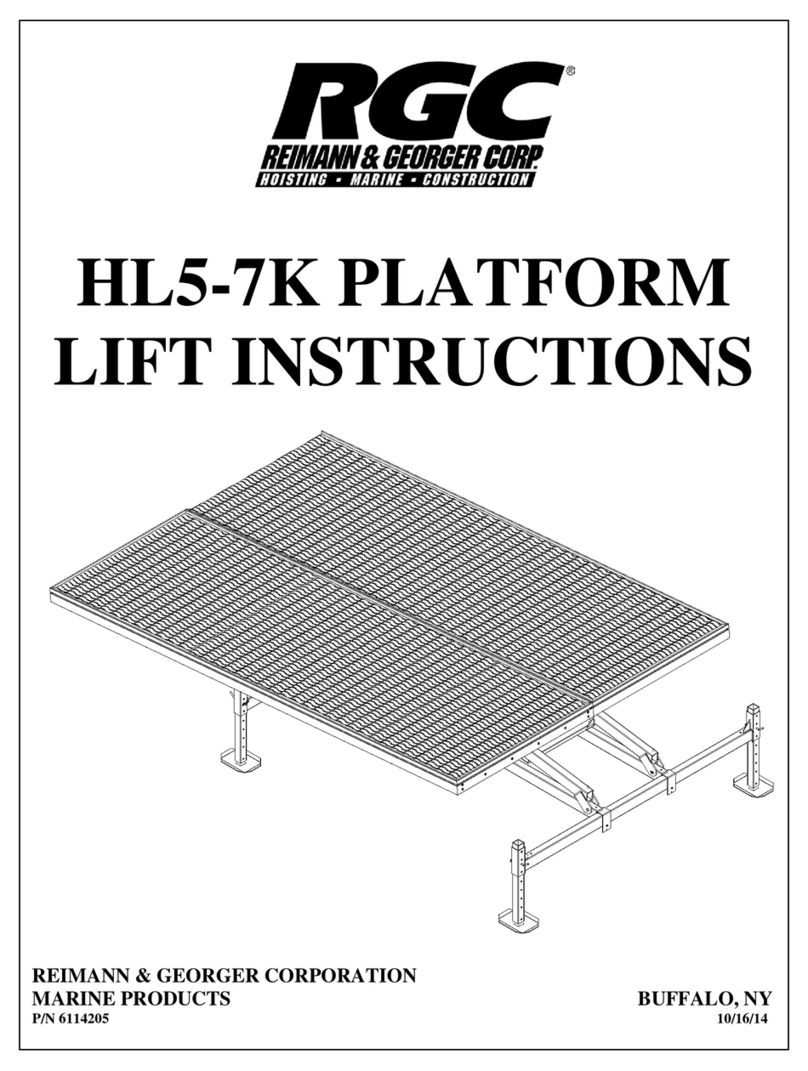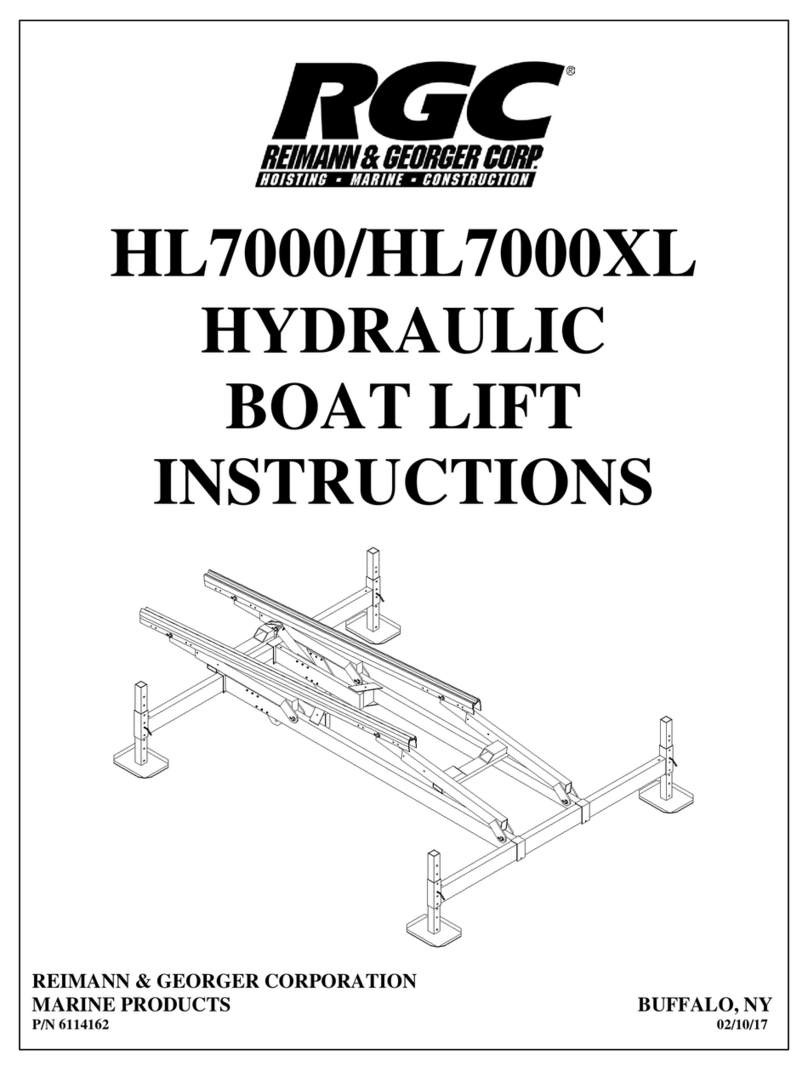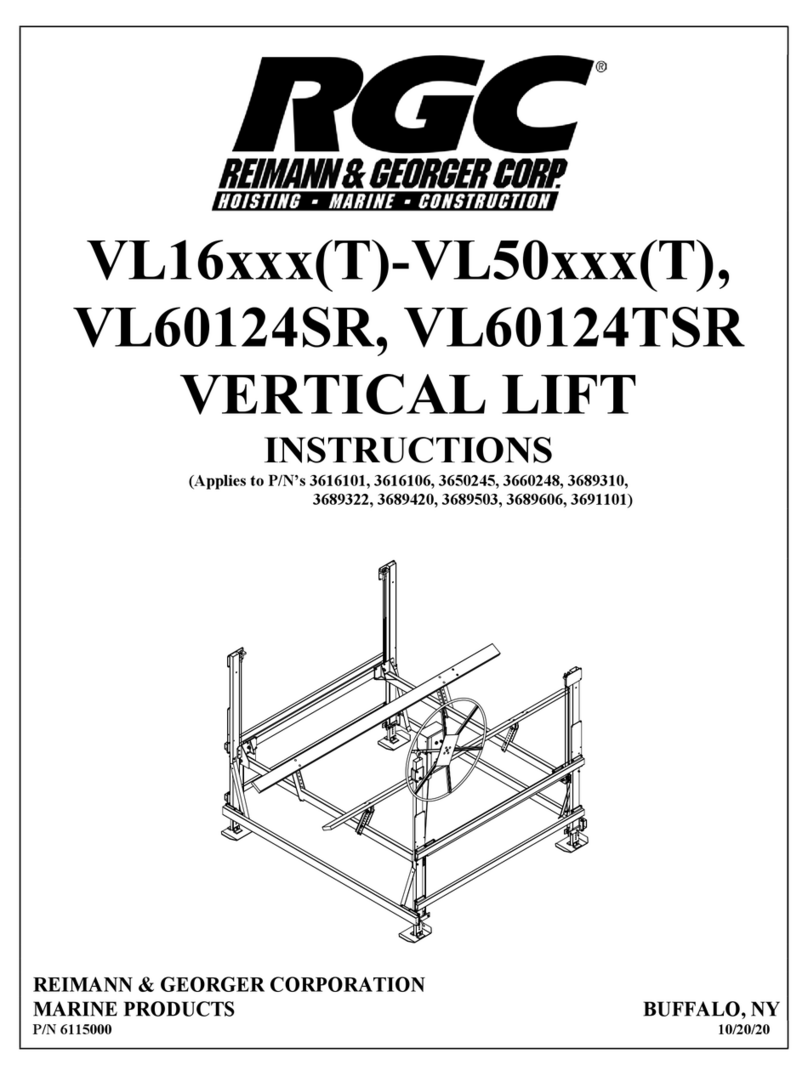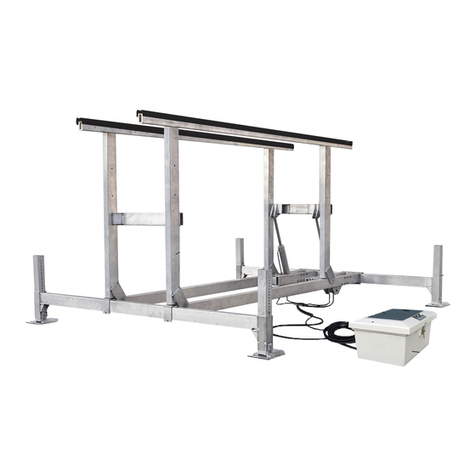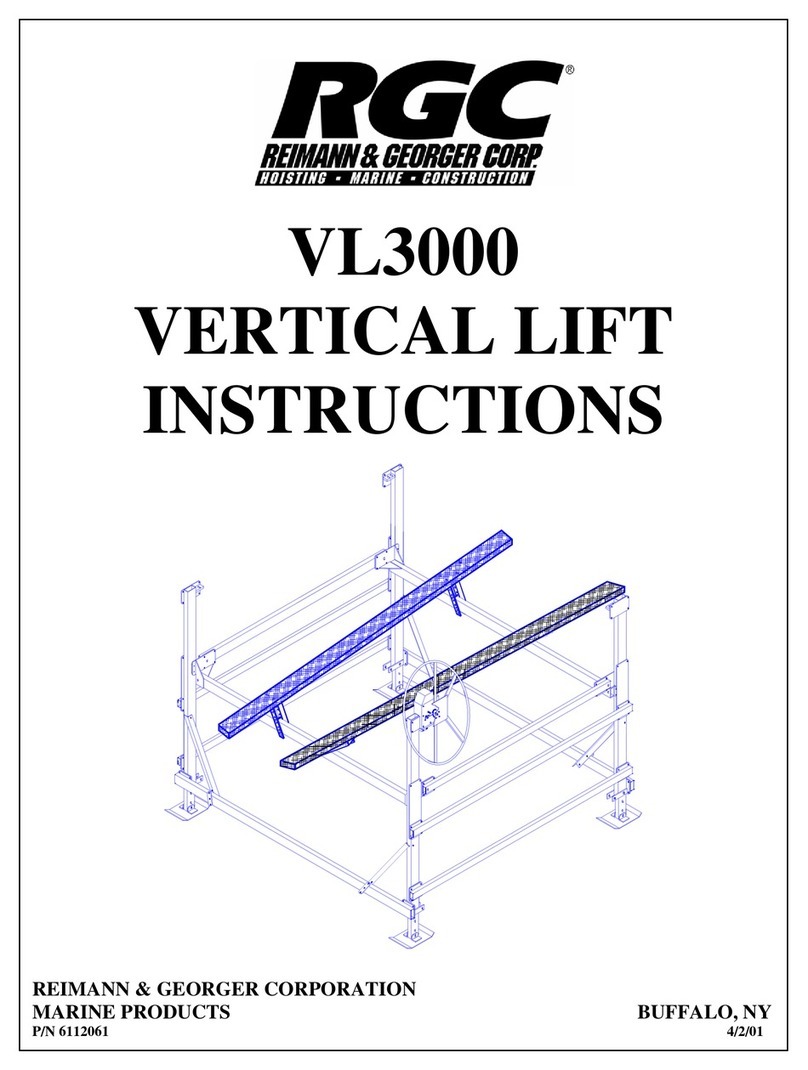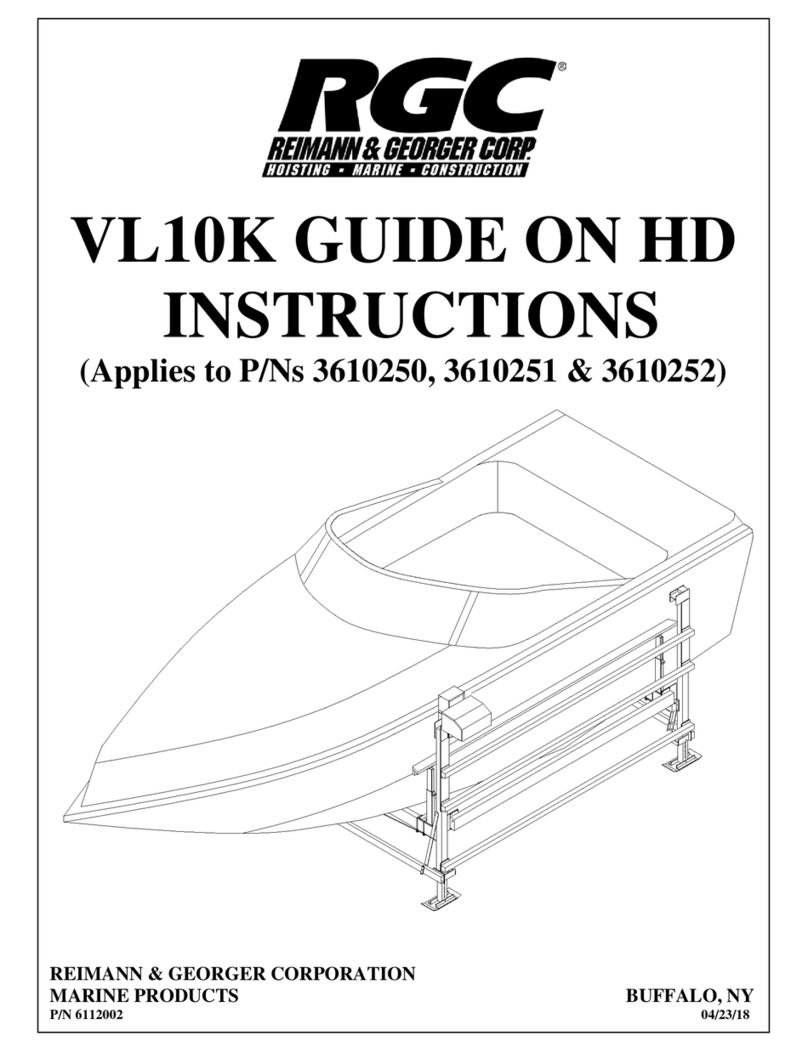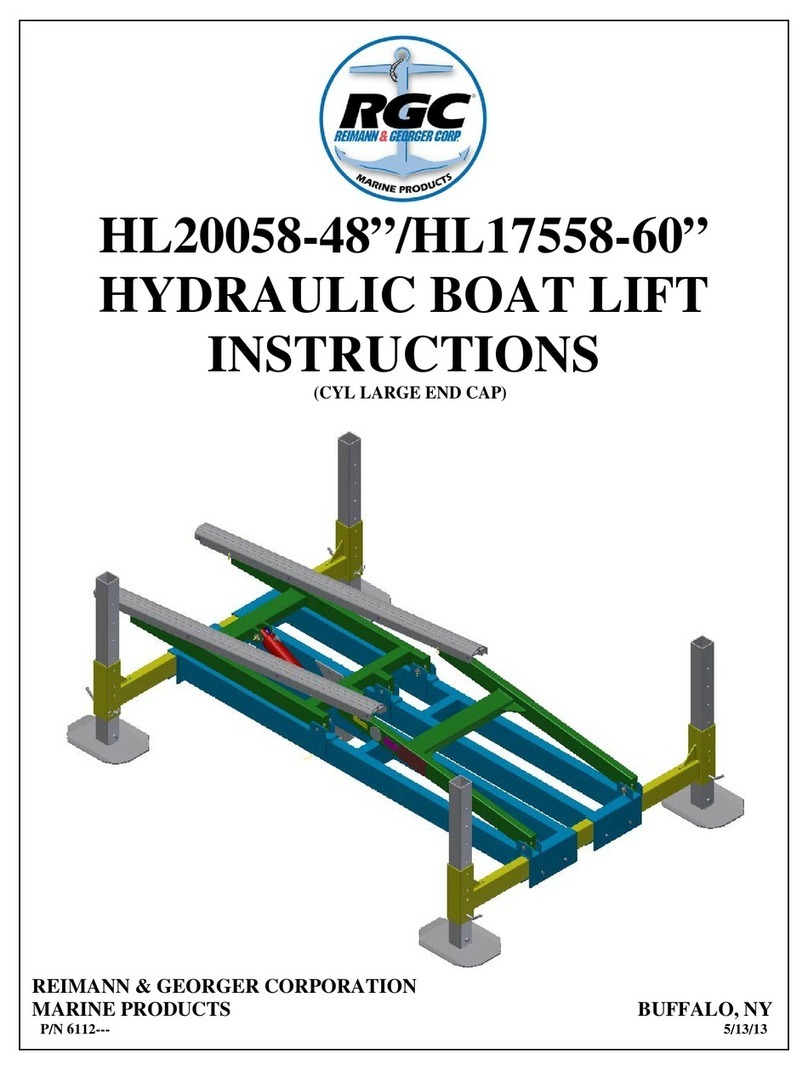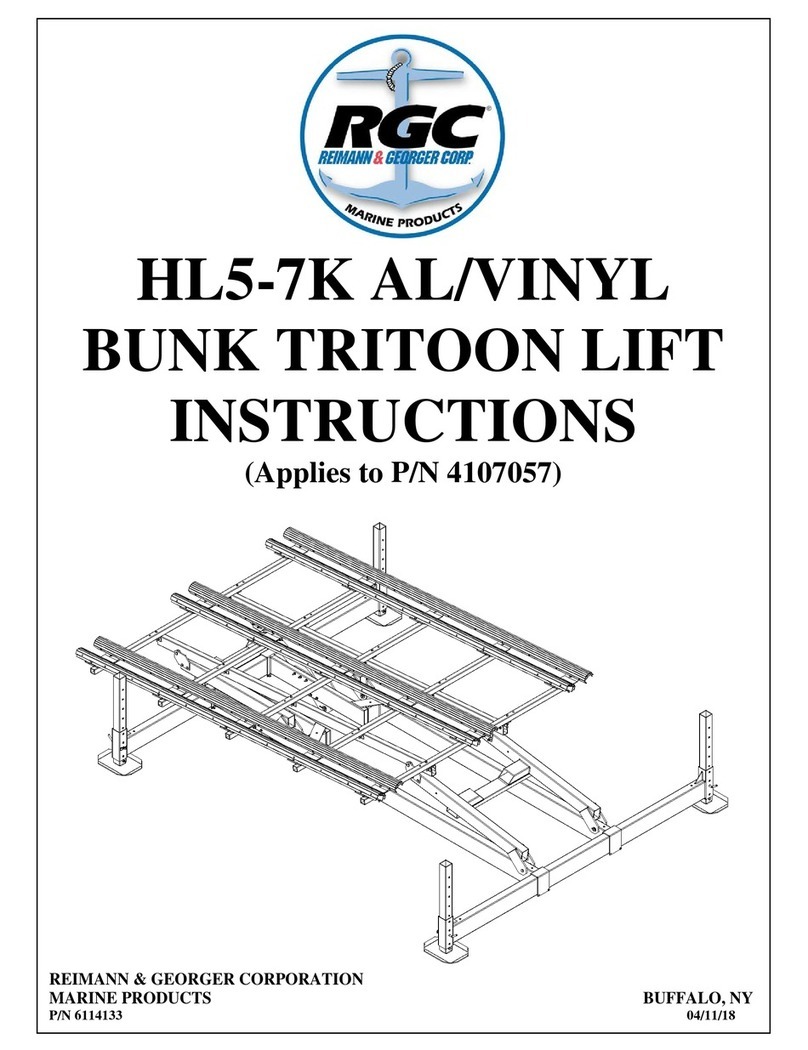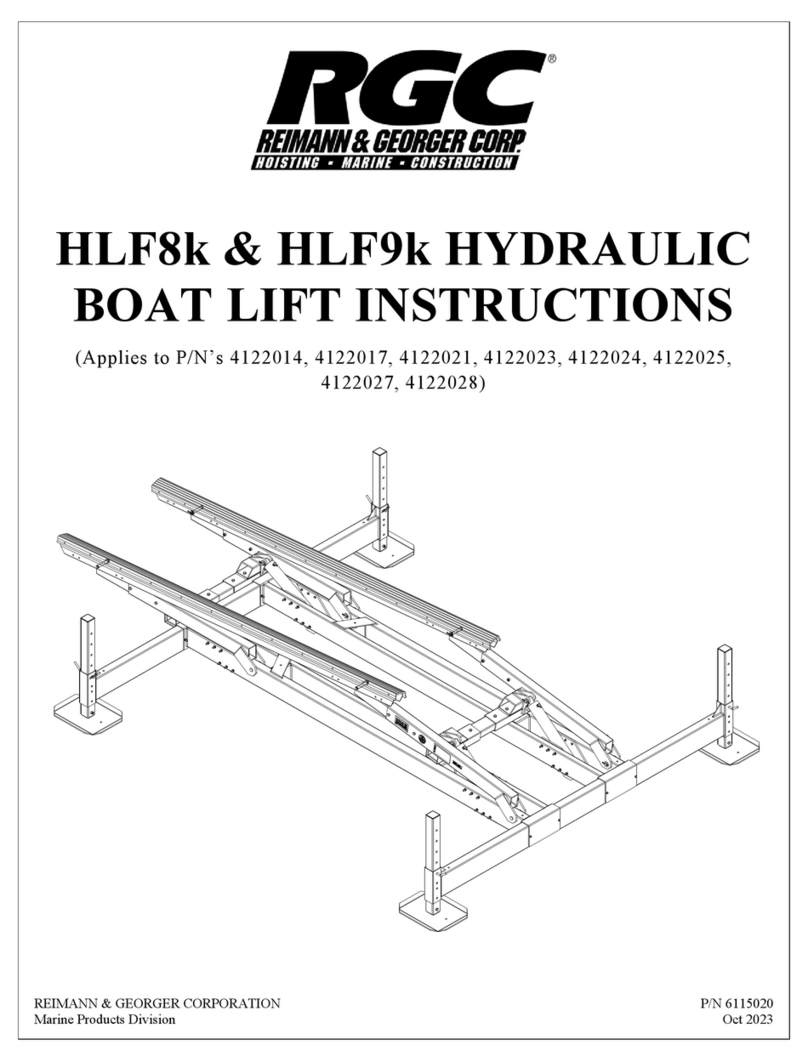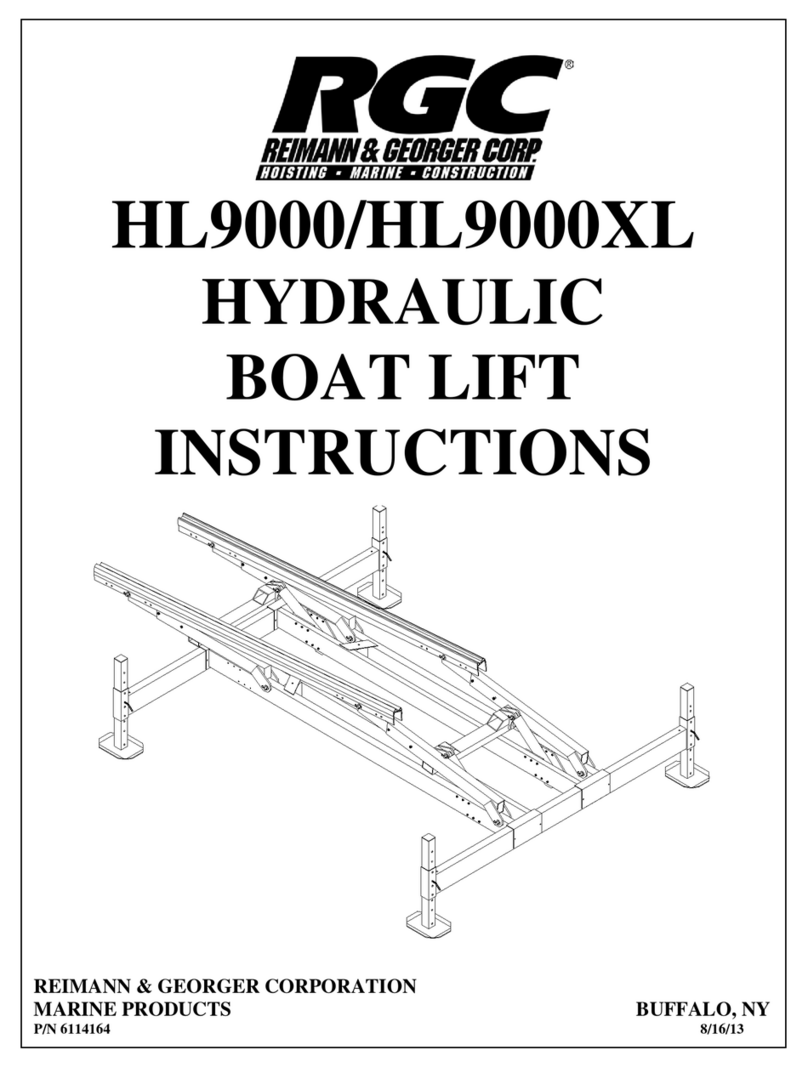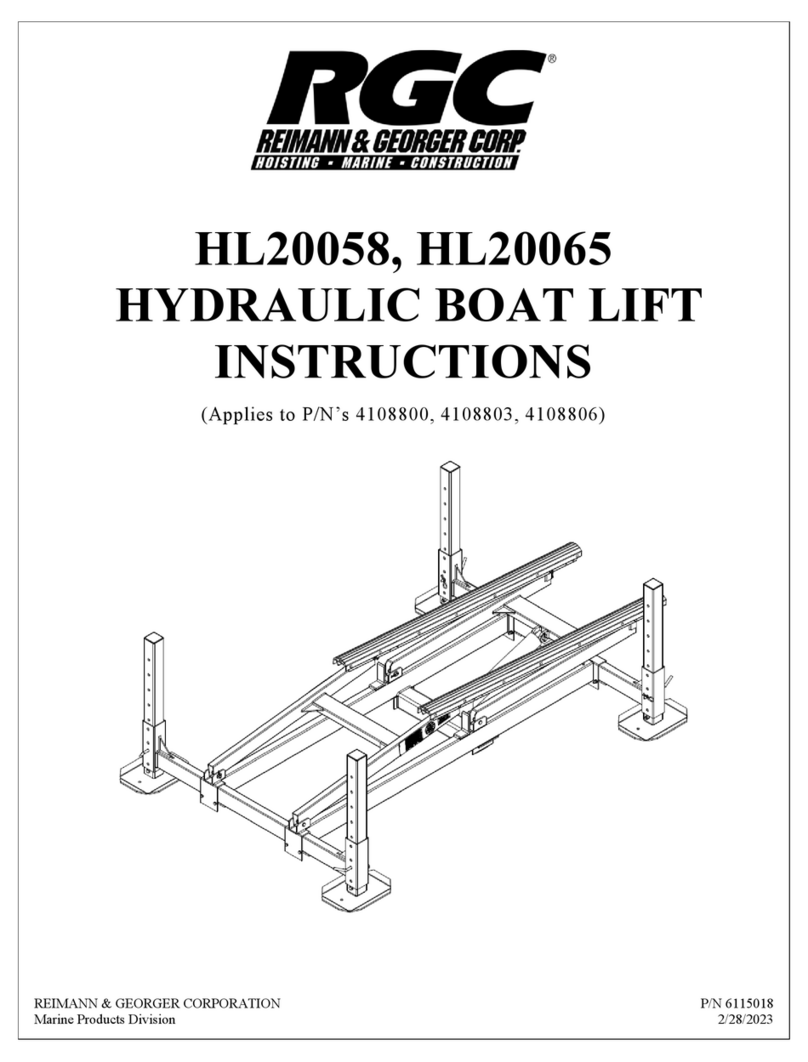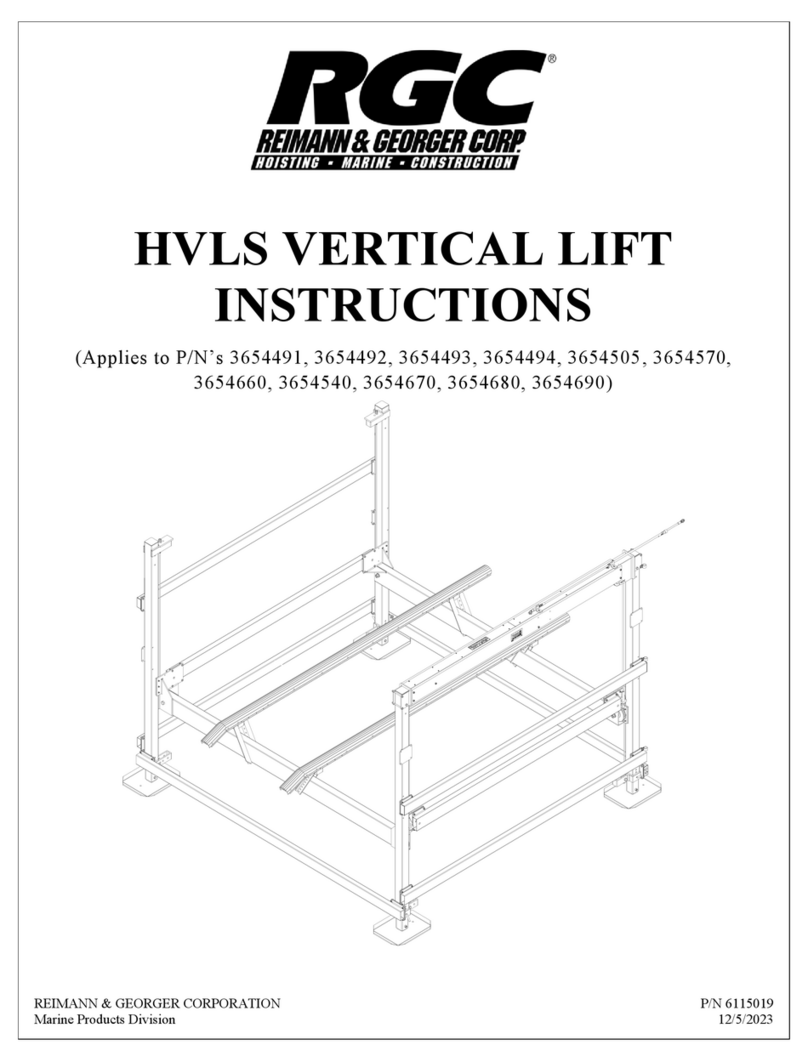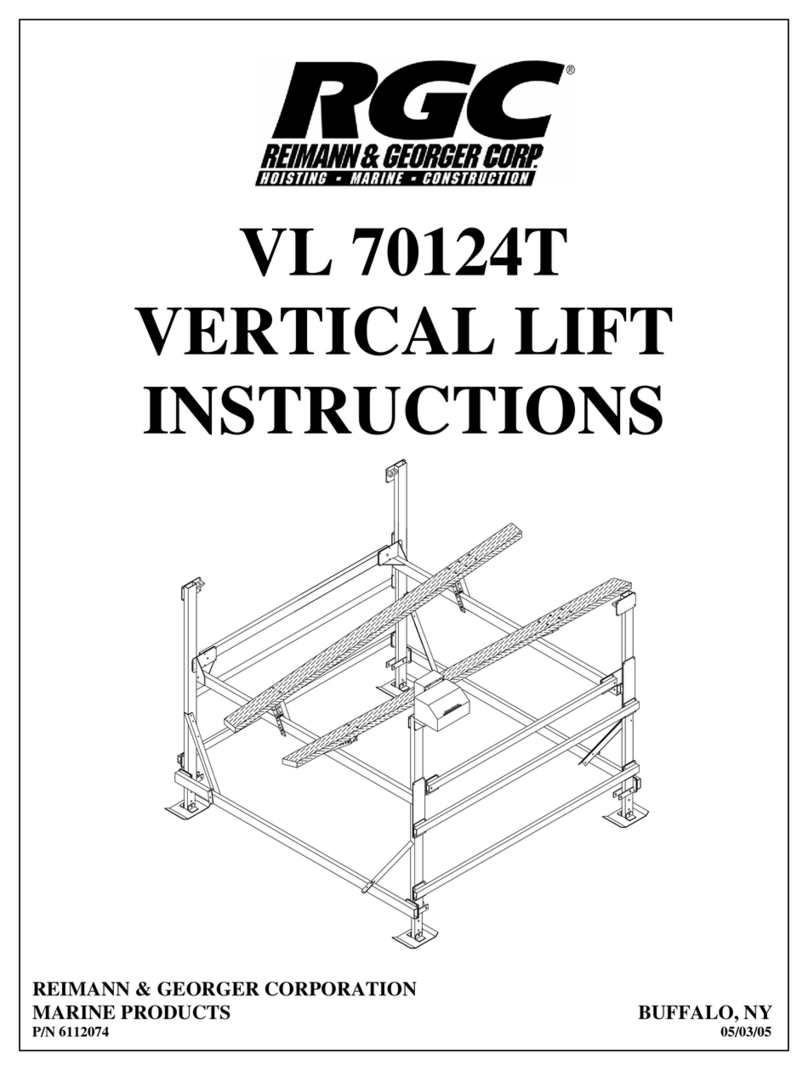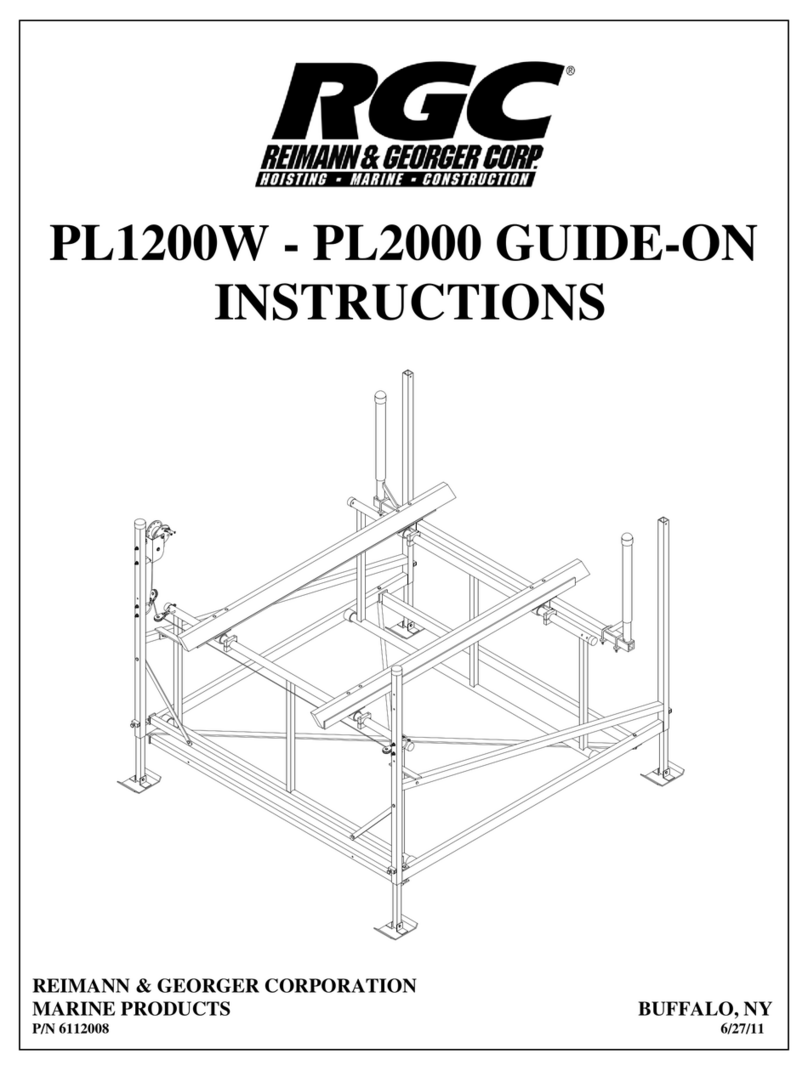
TABLE OF CONTENTS
CHAPTER TITLE PAGE
RGC MARINE PRODUCTS 11/16/99 PHONE: (716) 895-1156
1 SAFETY.................................................................................................................................1
1.1 Introduction.............................................................................................................................1
1.2 Safety Definitions....................................................................................................................1
1.3 Equipment Safety Labels.........................................................................................................1
1.4 Equipment And Personnel Safety ...........................................................................................1
1.5 Installation Safety....................................................................................................................2
1.6 Operating Safety......................................................................................................................2
1.6.1 General ....................................................................................................................................2
1.6.2 Safety When Raising the Boat.................................................................................................3
1.6.3 Safety When Lowering the Boat .............................................................................................3
1.7 Maintenance and Storage Safety .............................................................................................3
2 SPECIFICATIONS...............................................................................................................5
2.1 Technical Data.........................................................................................................................5
2.2 Nameplate and Serial Number Tag..........................................................................................5
2.3 Optional Equipment.................................................................................................................5
3 INSTALLATION AND SETUP...........................................................................................7
3.1 Pre-Installation Checks............................................................................................................7
3.2 Prior To Setup .........................................................................................................................7
3.3 Vertical Leg Assembly............................................................................................................8
3.4 Frame Side Assembly..............................................................................................................9
3.5 Platform Assembly..................................................................................................................9
3.6 Mounting The Platform To The Frame .................................................................................10
3.7 Mounting The Lower Diagonal Braces.................................................................................11
3.8 Platform Reeving And Adjustment .......................................................................................12
3.9 Winch/Handwheel Mounting ................................................................................................13
3.10 Reeving The Winch...............................................................................................................14
3.11 Moving Lift To Operating Position.......................................................................................15
4 OPERATION.......................................................................................................................16
4.1 Before Operating The Lift.....................................................................................................16
4.2 Testing Winch Operation ......................................................................................................16
4.3 Raising And Lowering The Platform ....................................................................................17
4.4 Securing Lift When Not In Use.............................................................................................17
5 INSPECTION AND MAINTENANCE.............................................................................18
5.1 General Maintenance Rules...................................................................................................18
5.2 Wire Rope Inspection Procedure...........................................................................................18
5.3 Annual Inspection..................................................................................................................19
5.4 Annual Winch Maintenance..................................................................................................19
5.5 Storage Procedure..................................................................................................................20
6 TROUBLESHOOTING......................................................................................................21
7 PARTS LISTS.......................................................................................................................23
7.1 #3616000 VL 16092 Boat Lift Bundles................................................................................23
7.1.1 #3616020 VL 16092 Bundle 1 of 2.......................................................................................23
7.1.2 #3616021 VL 16092 Bundle 2 of 2.......................................................................................23
7.2 VL Extension Legs................................................................................................................23
7.3 #3679355 VL Bunk Carton of Parts......................................................................................23
7.4 #3603778 VL Bunk Bundle ..................................................................................................24












